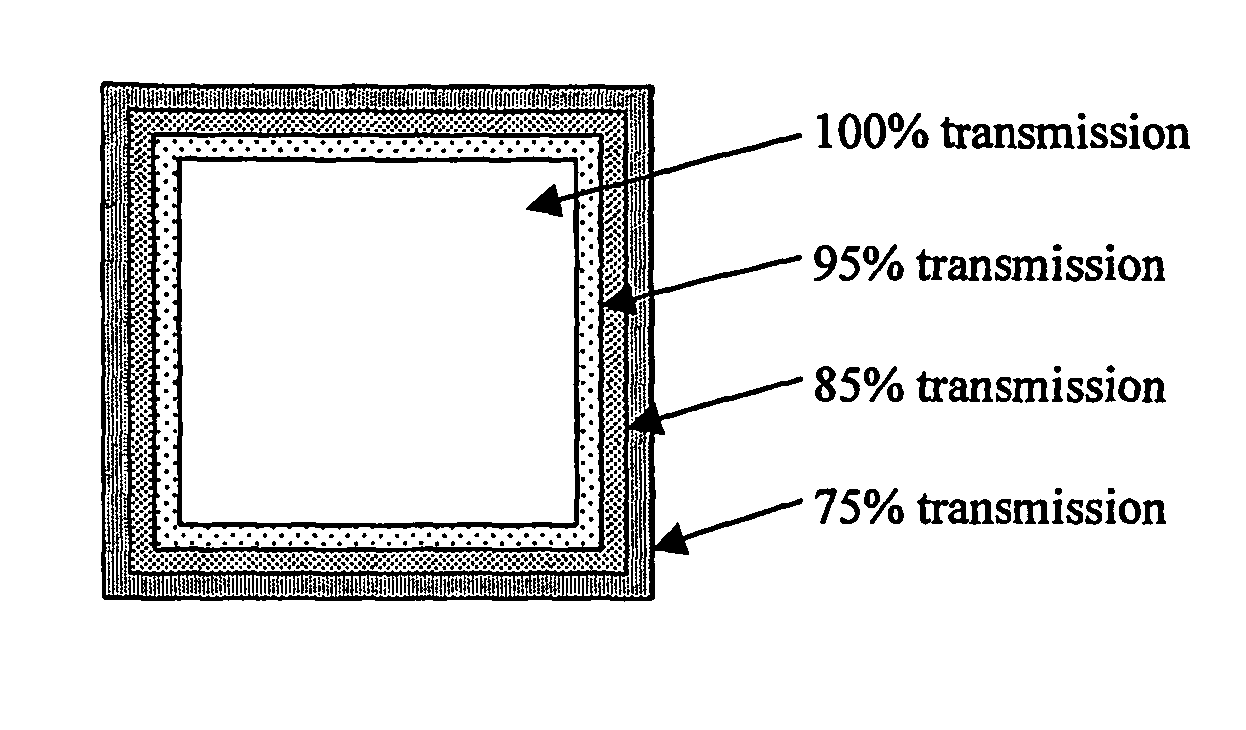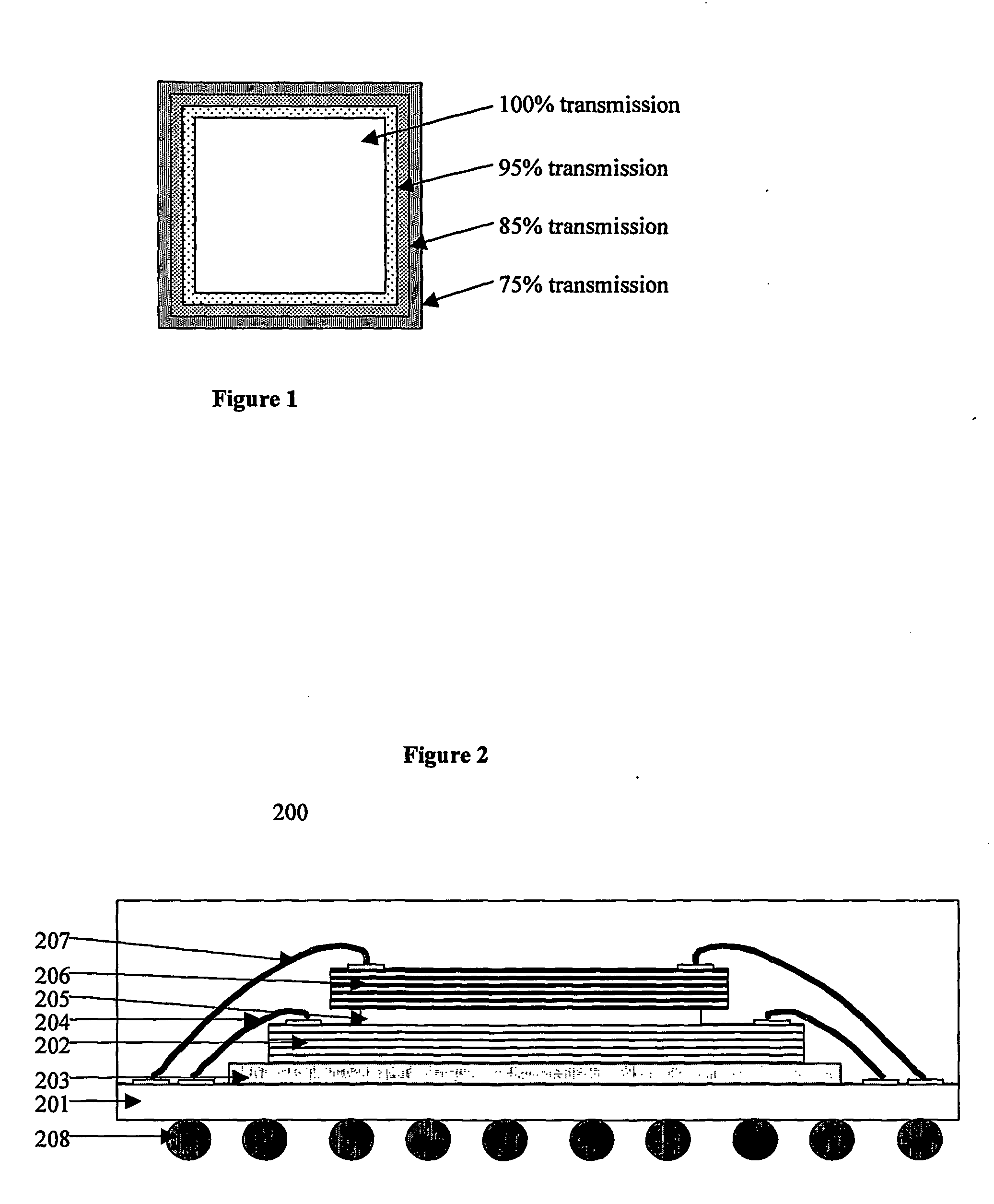Adhesion method using gray-scale photolithography
- Summary
- Abstract
- Description
- Claims
- Application Information
AI Technical Summary
Benefits of technology
Problems solved by technology
Method used
Image
Examples
example 1
[0119] Comparative example 1 is repeated except that instead of using a standard photomask, a gray-scale binary photomask is used. The gray-scale binary photomask is designed such that the perimeter of the pad receives a reduced amount of irradiation during photolithography. More specifically, the photomask defines a 5×5 mm pad as a series of squares of decreasing transmission from 100% to 75% transmission, with every additional square dropping in intensity as shown in FIG. 1. The intensities from 95% to 75% are in 50 μm bands and the intensity is controlled within each band by pixels that are 0.5 μm in size. Intensity is modulated between the bands by increasing the population of randomly placed opaque 1 μm pixels across each band.
[0120] The resulting patterned film (ie., pad) has reduced surface unevenness (reduced edgehills) as compared to comparative example 1. Interfacial contact is greater than 80%. Die shear value is greater than 20 Kg.
example 2
[0123] Comparative example 2 is repeated except that the gray-scale photomask designed such that the perimeter of the pad receives a reduced amount of irradiation during photolithography is used as in example 1. The resulting patterned film (i.e., pad) has reduced surface unevenness (reduced edgehills) as compared to comparative example 2. Interfacial contact is greater than 80%. Die shear value is greater than 20 Kg.
PUM
 Login to View More
Login to View More Abstract
Description
Claims
Application Information
 Login to View More
Login to View More - R&D
- Intellectual Property
- Life Sciences
- Materials
- Tech Scout
- Unparalleled Data Quality
- Higher Quality Content
- 60% Fewer Hallucinations
Browse by: Latest US Patents, China's latest patents, Technical Efficacy Thesaurus, Application Domain, Technology Topic, Popular Technical Reports.
© 2025 PatSnap. All rights reserved.Legal|Privacy policy|Modern Slavery Act Transparency Statement|Sitemap|About US| Contact US: help@patsnap.com


